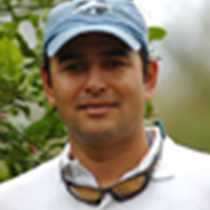Santa Cruz Island
Santa Cruz is the second largest island and it is the operations center of many tour boats anchored in Academy Bay. This body of water was named after the schooner owned by the Academy of Sciences that had visited the islands twice, in 1905-06 and also in 1936.
This morning we went to visit the installations of the Galápagos National park service to learn a bit more about the different programs that have been running for many years with a lot of success. Among the programs our guests appreciated most was the protection of reptiles in captivity. We had the opportunity to observe giant tortoise babies; there is a corral with tortoises from Santiago Island. Here is a place that Lindblad Expeditions has adopted, so one can observe the efforts of a tourism operator giving back to the islands; one day those babies will return to their island of heritage, as they are going to be repatriated soon to their home islands.
In the afternoon we went out to find these primitive reptiles but in their natural habitat, and indeed with a lot of success; at this time of the year they migrate toward the highest part of the islands looking for fresh water and vegetation, it was wonderful to watch them moving around, feeding on grass and taking a siesta.
By then it was time to come back to the National Geographic Islander to go on our navigation to the western most part of the Archipelago.
Santa Cruz is the second largest island and it is the operations center of many tour boats anchored in Academy Bay. This body of water was named after the schooner owned by the Academy of Sciences that had visited the islands twice, in 1905-06 and also in 1936.
This morning we went to visit the installations of the Galápagos National park service to learn a bit more about the different programs that have been running for many years with a lot of success. Among the programs our guests appreciated most was the protection of reptiles in captivity. We had the opportunity to observe giant tortoise babies; there is a corral with tortoises from Santiago Island. Here is a place that Lindblad Expeditions has adopted, so one can observe the efforts of a tourism operator giving back to the islands; one day those babies will return to their island of heritage, as they are going to be repatriated soon to their home islands.
In the afternoon we went out to find these primitive reptiles but in their natural habitat, and indeed with a lot of success; at this time of the year they migrate toward the highest part of the islands looking for fresh water and vegetation, it was wonderful to watch them moving around, feeding on grass and taking a siesta.
By then it was time to come back to the National Geographic Islander to go on our navigation to the western most part of the Archipelago.




